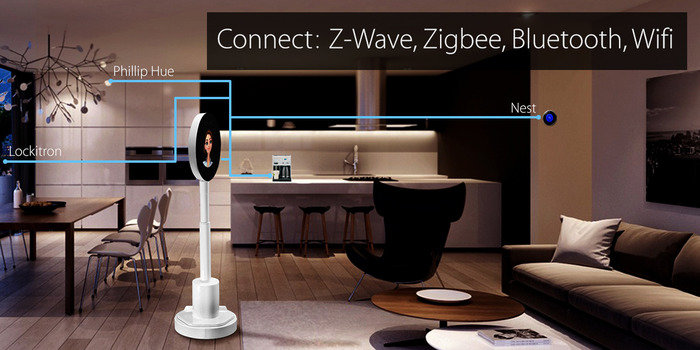Tech of the Week: Your very own home artificial intelligence, only a creepier version of JARVIS from Iron Man

She really is the whole package. Essentially looking like the fusion between an iPad, a Roomba, and a Dyson appliance, Robotbase has created a digital assistant that takes artificial intelligence up several notches.
Personalised robots have been in sci-fi movies, TV shows, and cartoons for decades. Rosie the robot from the Jetsons, Sonny from I, Robot, and JARVIS of Iron Man-fame have all been envisages of artificial intelligence. The convenience of having your very own butler without needing to be extravagantly rich is what’s driving Robotbase’s vision.
The on-screen avatar, which wheels itself around on a telescoping arm just over a meter tall, and holds its screen, camera, and other sensors, is wide-eyed pretty in a Japanese manga sense. It’s something that users can change as part of the personalisation process the company endorses. Robotbase calls it the “Artifical Intelligence Personal Robot” so users can give it a name more appealing for them as part of that personalisation.
Robotbase CEO Duy Huynh compares it to a really smart smart-home hub that can communicate and control all the smart devices in a user’s home. More than that, the company focuses on features they call “talents”, which are basically apps that you can install on the device. “Security guard” features kick in when you’re out of the house, while “Storyteller” capabilities help put the little ones to sleep when lazy parent just want to browse through their Netflix queue with a glass of red.
What Robotbase is pushing as revolutionary is their application of deep learning algorithms in building the robot, affording it unsupervised learning. Huynh claims it as a world-first, and allows the robot to see, hear, process the information, and respond accordingly, all the while becoming increasingly smarter and more attuned.
“Not only can the robot understand what I say, it can actually see things around it in the same way that we humans do,” Huynh says at a technology demonstration hosted by TechCrunch.
Weighing in at 9 kg, it’s built with HD speakers, LCD screen, and runs Android as its base operating system. Standard sensors such as accelerometer, gyro, compass, humidity, and temperature are all included.
While the level of complexity shown in the KickStarter video isn’t quite replicated in the demonstration, the promise of a fully functioning home robot is certainly welcome. In the mean time, a lot of work still needs to be done.
The project is currently seeking funding on KickStarter, having already raised nearly three times the amount it’s asking for.




